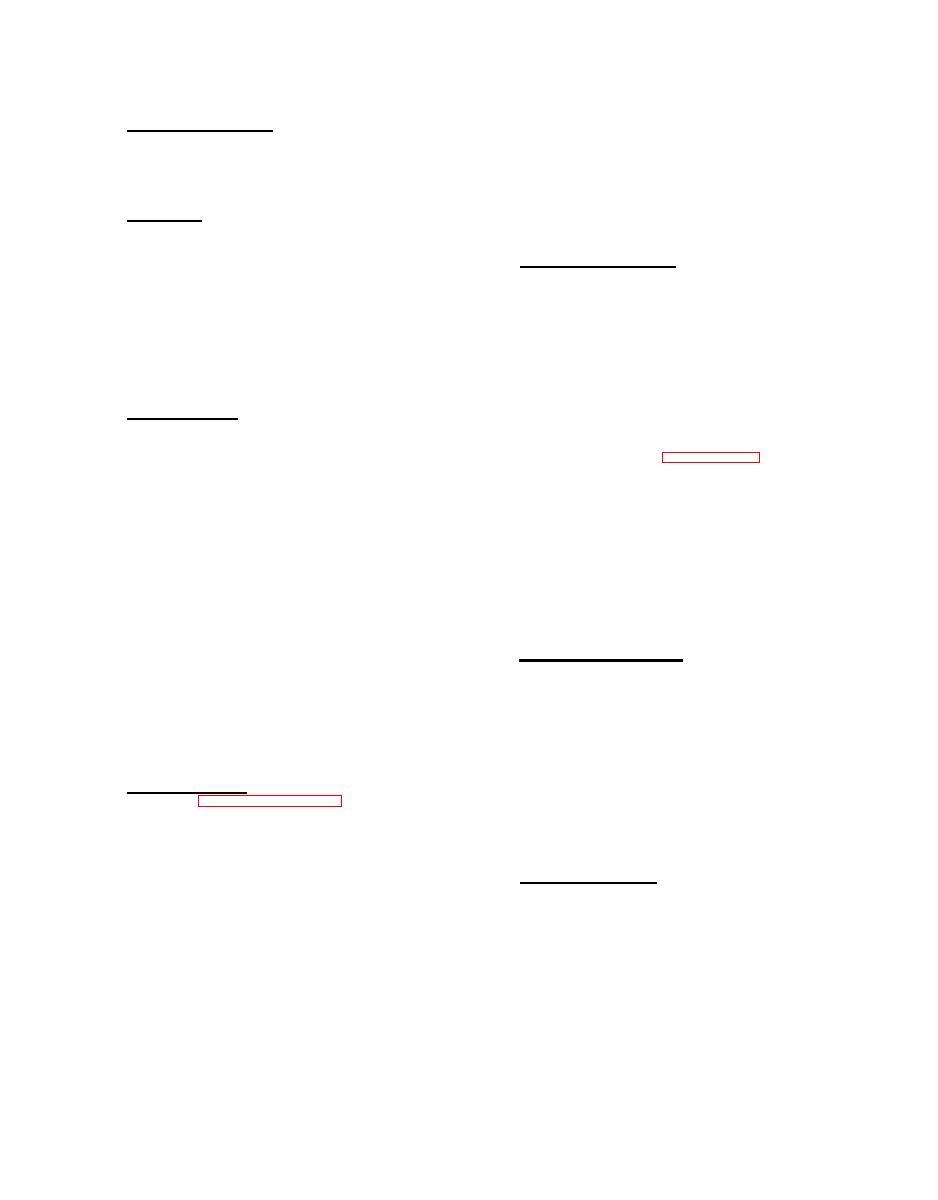 |
|||
|
|
|||
|
|
|||
| ||||||||||
|
|  TM
11-5820-919-40-1
Transmit/Receive.
The
module
phase-locked loop (PLL) and will stabi-
functions identically in
either transmit
lize when the VCO oscillates at the
or receive.
selected
frequency.
For example, at
16 MHz (which is halfway between 2 and
30 MHz), the VCO tune voltage is +5.8v
5-MHz LO.
The 5-MHz temperature-
and the LO frequency is 91 MHz.
compensated crystal oscillator (TCXO) U1
The
generates the 5-MHz LO signal.
Low Frequency PLL .
The low
5-MHz LO is routed to the multiplier U8
frequency reference of the PLL begins
and the frequency divider U9 (via ampli-
Frequency divider
with the 5-MHz TCXO.
fier Q3).
The 5-MHz LO is also routed
U9 generates two frequency standards, 1
A11
to the modulator/demodulator at J3.
and 10 kHz, from the 5-MHz input. The
other frequencies are referenced to the
1-kHz Standard and the Frequency Select
output of this oscillator.
Logic are applied to the low frequency
phase lock U5.
The low frequency phase
lock generates a signal that is between
The 5-MHz output
70/80-MHz LO.
0.0900 and 0.0999 MHz (0.09XY, where X
of the crystal. oscillator U1 is applied
and Y correspond to 1-kHz and O.1-kHz
to multiplier U8 where 70-80 MHz har-
Table 2-6 lists
control panel digits).
Narrow
bandpass
monics are generated.
The 0.09XY MHz signal
a few examples.
filters FL2A and FL3B pass 70 and 80
mixes with 70.00 MHz from filter FL2B to
MHz, respectively. The peak amplitudes
produce 70.09XY MHz and 69.91xY MHz.
are adjusted in limiter U7 and outputted
The 69.91xY MHz is filtered out at fil-
to three filters (FL2C, FL3A and FL2B).
ter FL1A, leaving the 70.09XY MHz to be
When the LSB +28v select line is at +0v,
amplified at amplifier AR3 and refil-
filter FL2C receives 70 MHz LO. When
The 70.09XY MHz
tered at filter FL1B.
the LSB +28v is +28v, filter FL3A
is then applied to the VCO.
Filter FL2B
receives 80 MHz LO.
receives the 70 MHz (whether LSB +28v
is on or off) which is used in the 77-
High Frequency PLL. The 70.09XY
105 MHz voltage-controlled oscillator
MHz enters the VCO U3 where it mixes
The 70 or 80 MHz is routed
(vCo).
with the output of the voltage-
through power splitting transformer,
controlled oscillator (between 77 and
T2, and impedance matching transformer,
The upper sideband product
105 MHz).
T1, to the modulator/demodulator.
of the mixing (77-105 + 70.09XY MHz)
is filtered out at the band-pass filter
The frequency passing
L3-7, C18-22.
The 77-105 MHz LO
77-105 MHz LO.
This is
through is 6.91-34.90 MHz.
is discussed in paragraphs 2-62 thru
approximately 4.91 MHz above the control
panel
frequency.
The exact frequency of
2-62. VCO.
the 77-105 MHz LO can be determined by
10-kHz Standard. The 6.91-34.90
MHz signal is routed through prescaler
adding 75,000 kHz to the control panel
frequency.
This frequency is generated
U4 to high frequency loop filter U2.
The oscillation fre-
by the VCO U3.
These two circuits work together to
divide the 6.91-34.90 MHz input between
quency of the VCO U3 is controlled by
The
691 and 3490 times. After the division,
the VCO tune voltage (2.6 to 9v).
voltage is linearly proportional to fre-
the 6.91-34.90 MHz signal is about 10
At 2.6v the VCO output is about
kHz, which is phase and frequency-
quency.
77 MHz, and at 9V it is about 105 MHz.
compared against the .10-kHz Standard.
Any difference will cause the VCO tune
The VCO tune voltage changes when a new
voltage to change.
frequency is selected at the control
The tune voltage is part of a
panel.
|
|
Privacy Statement - Press Release - Copyright Information. - Contact Us |